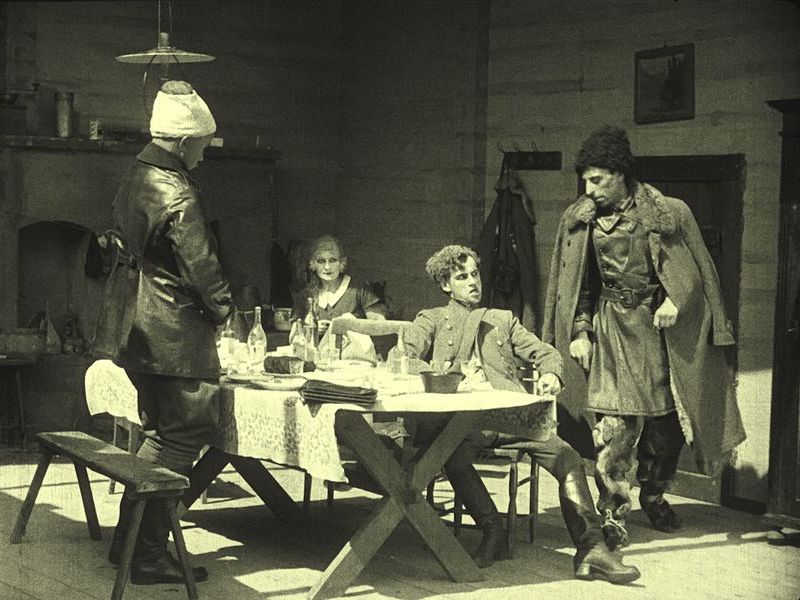NOORED KOTKAD
[The Young Eagles]
Theodor Luts (EE 1927)
Following the 1917 October Revolution, Estonia declared independence, but before the country could enjoy peace, it had to combat the Soviet Army and the German Landeswehr in the Estonian War of Independence, lasting from 1918-20. The war, fought and won by a small nation with boys who went from classrooms straight to the front, is an essential pillar of Estonian national identity.
Seven years after the event, when Theodor Luts (1896-1980), a veteran of the War, wanted to make a film about the struggle, he solicited the government for help in financing, believing the patriotic subject matter would loosen normally closed purse strings, but received no assistance from the state and ended up taking out a bank loan in order to cover the costs of production (though once filming began, the Estonian Defence League provided logistical support, including extras and armaments). In a 1999 radio interview, his wife and collaborator Aksella Luts (1905-2005) said, “Of course, no one ever gave us a penny. Theodor once asked the Minister of Finance, Pung was his name, and he said, ‘Young man, you look decent enough. But why make films? Why don’t you cut diamonds instead?’ That’s all the help we got.” Given that Mihkel Pung was not Finance Minister until 1931, it’s likely she was confusing Noored Kotkad (The Young Eagles) with a later film, though it may be that Pung, as president of the Bank of Estonia, was in a position to advise the government on the feasibility of bankrolling film productions, or possibly had something to do with the loan Luts was eventually able to secure. Aksella reported it took them ten years to pay back the bank.
The story involves three brave young army volunteers: rich student Tammekänd (Arnold Vaino), blacksmith Laansoo (Juhan Nõmmik), and poor farmhand Lepik (Ruut Tarmo). The “three eagles” become close friends, witnessing Bolshevik atrocities before joining up to fight for Estonian independence. Luts hired the young artist Heino (Heinrich) Lehepuu (1907-1942) as art director, and chose “breath-taking locations in Estonian landscapes to shoot scenes of the War” (K.A. Hindrey, Päevaleht, 9 December 1927), which contributed greatly to the film’s success. Even today, the battle scenes in The Young Eagles are valued for their scenic views of Värska (the Setomaa region), and their power also had an impact abroad, with Luts recalling their reception in Germany: “it was the size and power of the battle scenes that made the Germans wonder. They couldn’t figure out how a small country’s film industry could produce such powerful battlefield sequences.” Of these scenes, Antti Alanen recently wrote, “Unforgettable are the extreme long shots of battles staged on the Värska military exercise fields. They evoke the Olympian visions of Griffith in The Birth of a Nation and America.” Aksella Luts remembered that after the film premiered, little boys played young soldiers on the streets – some on the Russian and some on the Estonian side.
Theodor Luts studied chemistry and commerce before joining the infantry during the War of Independence. In 1924 he married Aksella Hildegard Kapsta, a student of modern dance, who was to become a key figure in Estonian film history as screenwriter, actor, choreographer, editor, and photographer. Together they went to Berlin to learn the latest dances before returning to Estonia, where they gave classes and worked for magazines focused on dance, film, and fashion. Soon the young couple left for Paris, where Theodor apprenticed with cinematographer Nikolai Toporkoff at the Albatros studio (the Éclair camera Toporkoff gave him was the one Luts used on The Young Eagles). Once back in Estonia, he directed documentaries and three features, including the first Estonian sound film, Päikese lapsed (Children of the Sun, 1932), before moving to Finland in 1938, where together the couple made significant contributions to the Finnish film industry (she frequently wrote under the male pseudonym Antti Metsaots). In 1944, Theodor and Aksella left the instability of Finland and travelled via Sweden to Brazil, settling near São Paulo, where they continued to make films until Theodor’s death in1980. Aksella came back to Estonia in 1996, dying in 2005.
Maria Mang


regia/dir, photog, mont/ed, lighting: Theodor Luts.
scen: Theodor Luts, Aksella Luts, Oskar Luts.
scg/des: Heino Lehepuu.
dec: Voldemar Haas, Heino Lehepuu.
make-up: Aksella Luts.
asst dir: Johannes Nõmmik.
cons: Jaan Unt.
cast: Arnold Vaino (studente/Student Tammekänd), Johannes Nõmmik (Sepp Laansoo), Rudolf Klein (bracciante/Farmhand Lepik), Elly Põder-Roht (la sorella di Sepp/Sepp’s sister Hilja), Aksella Luts (la figlia della guardia forestale/Forest ranger’s daughter), Amalie Konsa (la madre di Sepp e Hilja/Mother to Sepp and Hilja), Rudolf Ratassepp (Primo comandante dell’Armata Rossa/First Red Army Commander), Olev Reintalu (Secondo comandante dell’Armata Rossa/Second Red Army Commander), Vambola Kurg (Primo comandante dell’esercito estone/First Estonian Army Commander Unt), Johannes Schütz (Secondo comandante dell’esercito estone/Second Estonian Army Commander), August Sunne (dottore/Doctor), Leopold Hansen, Osvald Lipp.
prod: Theodor Luts, Siirius Film.
dist: Theodor Lutsu Filmiproduktsioon.
uscita/rel: 19.11.1927, Cinema Apollo, Tartu.
copia/copy: DCP, 106’38” (da/from 35mm, 18 fps); did./titles: EST.
fonte/source: Eesti Rahvusarhiivi Filmiarhiivi, Tallinn.




